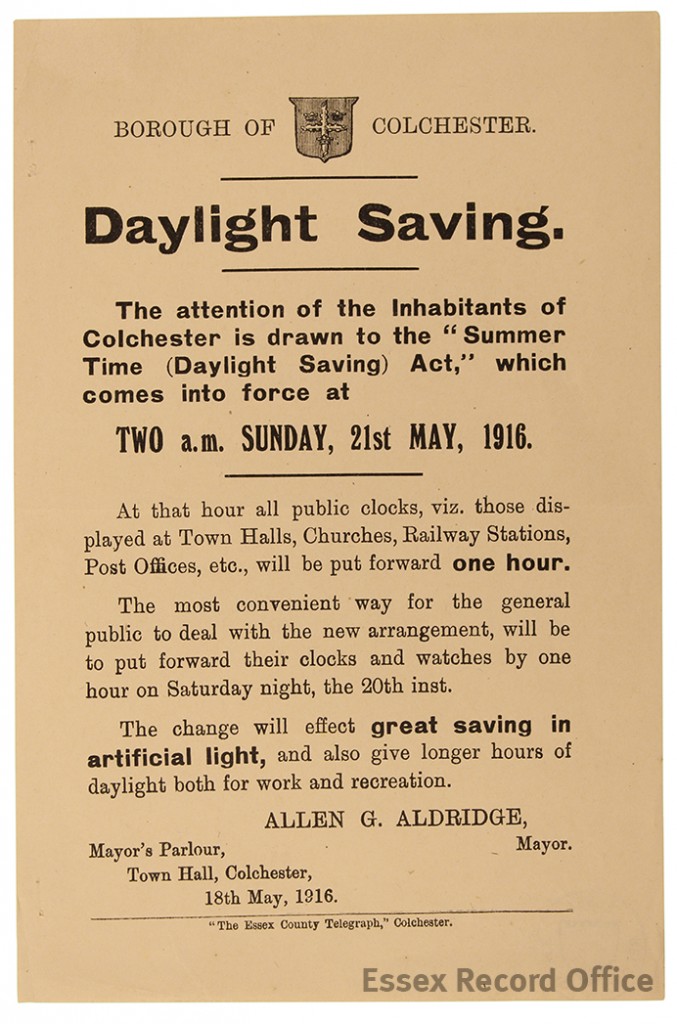D/DU 1407/1
As the clocks go back again for the winter, November’s Document of the Month looks at the introduction of Daylight Saving Time in the UK in 1916, when the clocks went forward by one hour at 2 am on 21 May. This flyer produced by the Borough of Colchester was issued to alert the public to the need to change their clocks and watches before they went to bed on Saturday 20 May. The clocks went back again on 1 October 1916.
The idea was suggested by William Willetts, a builder who proposed a change of 80 minutes, changing by 20 minutes each week in April and reversing the change each week in September. Willetts died in 1915, before Daylight Saving Time was introduced.
There has been much discussion about the merits of going back to Greenwich Mean Time (GMT) for the winter. Experiments in the late 1960s on staying on British Summer Time (BST) over the winter did result in an apparent decrease in road accident casualties but as this coincided with the introduction of legislation to limit drinking and driving, the effects were deemed difficult to isolate.
While England and Wales generally seem to prefer to stay on BST for the whole year, Scotland would prefer to return to GMT for the winter as this means that people are travelling to school and work in the daylight in the morning. However, if this were to happen it would be the first time that the UK had two time zones since Dublin Mean Time was abolished in 1916. It would also mean that Greenwich would not be using Greenwich Mean Time.
The document will be on display in the ERO Searchroom throughout November 2016.

